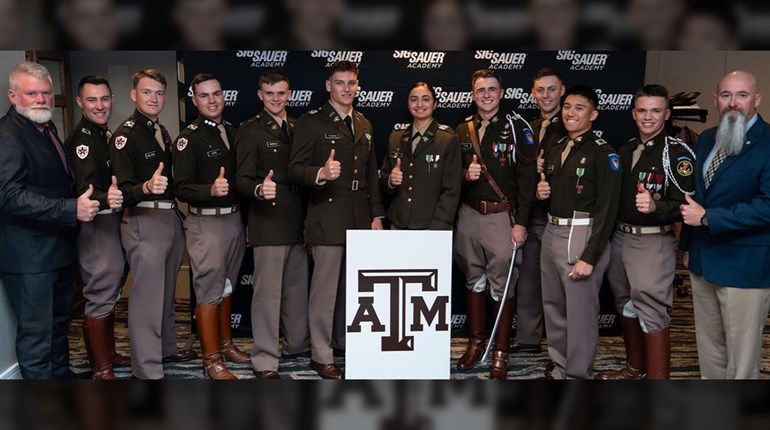
Though, I doubt I'll ever do so, I'd happily take ownership of a wagonload of ammo; paying for it would be the problem. What I (and you) can do is own and shoot ammunition made by a wagon company. Now, while that may not sound like the best tactical advice, what if I told you the name of that wagon company was SIG?
You see, SIG stands for Swiss Industrial Company or Schweizerische Industrie-Gesellschaft. SIG was founded in 1864 after the company, located above the Rhine Falls in Switzerland, and operating under its previous name of The Swiss Wagon Factory, received a contract to build 30,000 muzzleloading rifles. Up until then, The Swiss Wagon Company built sophisticated wagons and railway cars, but after 1864 it became the firearms company we're all familiar with. In 1985 SIG ARMS became the American division of the company, which in 2007 became SIG Sauer. It has a reputation for building and distributing impeccably reliable, accurate and exceptional firearms.
In 2014, SIG Sauer introduced a line of ammunition specifically engineered to provide flawless reliability, superb accuracy and exceptional terminal performance. According to Bud Fini, vice president of marketing with SIG Sauer, the company's intent was to provide high-quality ammunition to the commercial sector. Essentially, SIG Sauer wanted to sell ammunition to regular gun-owning folks like you and me, built to the same exacting specifications as its firearms.
Law enforcement has shown a lot of interest in the new loads from SIG. This is partly because of the shortages associated with ammunition for various cartridges like the .380 ACP, and partly because segments of the law enforcement community are changing their thoughts on bonded versus non-bonded bullets. Additionally, for a long time the benchmark of a law enforcement handgun bullet has been 12 inches or more of penetration with 1.5 times expansion and at least 80-percent weight retention. For the most part, SIG Sauer's new V-Crown, mechanically locked, non-bonded bullet, used in the company's Elite Performance Ammunition, meets or exceeds that standard.
We tested all currently available Elite Performance Ammunition loads from SIG Sauer in 10-percent ordnance gelatin covered with two layers of denim. With the exception of the .380 ACP load, they all exceeded the 12-inch penetration minimum. (A .380 ACP load that expands 1.5 times its original diameter and penetrates more than 12 inches comes with a unicorn.) Every recovered bullet retained 100 percent of its weight, and all but the .45 ACP exceeded the 1.5 times expansion threshold. For all five loads, the average penetration was 13.65 inches, and average expansion was .6 inch, or 1.58 times the bullet's unfired diameter.
One hundred rounds of each load were fired with only one stoppage, a failure to feed from a Diamondback DB380. This suggests SIG Sauer did its homework with regard to bullet profile, recoil impulse and the choice to use Techni-Chrom plating on the brass. Accuracy was more than sufficient, if not exceptional. Twenty-five, five-shot groups—five with each load—averaged 2.22 inches. And, the average velocity for each load was faster than those advertised for all save the .380 ACP, which came in 16 fps slower than advertised. (SIG Sauer's advertised velocities for the .380 ACP were obtained with a 4-inch barrel; the Diamondback .380 used for testing had a 2.8-inch barrel.)
Has SIG Sauer created the ultimate personal protection, concealed carry, defensive-handgun loads? Using the words ultimate, or best, when describing ammunition or anything else is a very subjective thing. I'll not go there, however, I will go as far as saying I'd trust the new ammunition, and each load is every bit as good as the firearms built by the company. SIG Sauer says this is just the beginning of its Kentucky-based ammunition works. Optimized loads for pocket pistols and subsonic loads are coming. Rifle loads are being developed, too, so expect to see supersonic and subsonic .300 AAC Blackout loads followed by 5.56 NATO and 7.62 NATO offerings by 2015.
With the difficulty of finding quality ammunition for our defensive firearms the way it is, I think SIG Sauer's new Elite Performance Ammunition is something we can all hitch our wagon to, even if we cannot afford to fill them up.
Test Results—SIG Sauer Elite Performance Ammunition
| Load | VEL | MD | SD | PEN | RW | RD | ACC | MSRP |
| .380 ACP 90-grain JHP | 964 | 64 | 21 | 10.0 | 90 | .545 | 2.76 | $22.17 |
| 9 mm 124-grain JHP | 1,208 | 36 | 12 | 14.0 | 124 | .565 | 2.13 | $22.17 |
| .357 SIG 125-grain JHP | 1,384 | 29 | 9 | 14.5 | 125 | .612 | 1.92 | $28.13 |
| .40 S&W 165-grain JHP | 1,105 | 20 | 6 | 13.5 | 165 | .702 | 2.77 | $28.13 |
| .45 ACP 200-grain JHP | 933 | 89 | 21 | 16.25 | 200 | .607 | 1.51 | $29.45 |
Velocity measured in fps 10 feet from the muzzle for 10 shots with a Shooting Chrony chronograph. Terminal performance results represent the average for three shots fired into blocks of 10-percent ordnance gelatin covered with two layers of denim. Accuracy measured in inches and is the average of five, five shot groups fired at 25 yards from a sandbag rest. (The .380 ACP load was tested at 15 yards.)
Test guns : .380 ACP–Diamondback DB380; 9 mm–Browning Hi Power; .40 S&W–Smith & Wesson M&P; .357 SIG–SIG Sauer P226 Elite; .45 ACP–Para USA Commander.
Temperature: 77 degrees Fahrenheit. Elevation: 2,200 feet. VEL = Average Velocity; MD = Maximum Velocity Deviation in fps; SD = Standard Velocity Deviation in fps; PEN = Penetration Depth in inches; RW = Recovered Bullet Weight in grains; RD = Recovered Bullet Diameter in inches; ACC = Average Accuracy. MSRP reflects Manufacturer's Suggested Retail Price per box of 20.




































